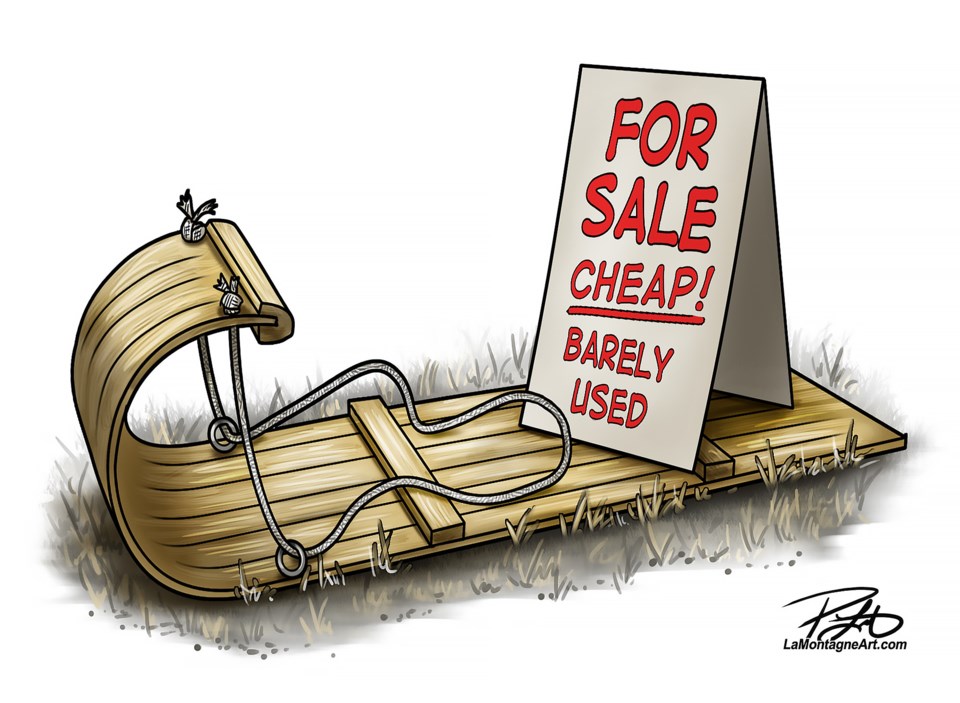Brrr, it is unbearably frigid outside. Wait a minute. No it ain’t.
While it’s not quite time to throw on a loose-fitting button-up Hawaiian T-shirt and squirt on an obscene amount of sunscreen goo, the mountainous Bow Valley and most of prairie-laden Alberta has been unseasonably warmer so far this 2023-24 winter season.
For some, the mild weather is a nice change, namely those who have had to stand still outside at the Canmore Nordic Centre in years past shivering against the cold while watching winter athletes keep warm by being active, or for those who spent a few nights in an off-the-grid cabin last week, which didn’t turn out to be an utterly regrettable decision when the wood stove, the only source of external heat, burnt out several times.
For me, er, I mean for those other people, it ain’t bad.
Though looking at the bigger picture, the drier conditions are a tad bit concerning, perhaps even an eerie forecast when winter eventually ends.
There’s a reason why much of western Canada is above normal temperatures right now.
El Niño, a natural climate pattern associated with warming of the ocean surface temperatures that pushes warmer waters toward the Pacific northwest, is causing us to prematurely unpack our summer clothes.
El Niño occurs every two to seven years and can last up to 18 months, and meteorologists had predicted western Canada was entering a new cycle prior to this ski season.
Its accuracy has further been proven right, as seen in this week’s Outlook article “Banff has sixth warmest December in 135 years”.
For the past few years, the weather cycle in Western Canada has been in a La Niña, which has the opposite effects of the El Niño. Typically, a La Niña cycle is better for snowfall in the Bow Valley.
That’s good because I was looking for something to blame for my car battery dying two years ago in the frosty weather other than myself.
Perhaps the most worrying aspect is how dry it’s been due to the lack of snow/precipitation.
Brace yourself, Bow Valley, it’s only January and the very real reality of wildfires is creeping in the back of the mind.
By the end of November 2023, Environment Canada assessed that conditions across the prairies had trended drier than normal, saying that Central Alberta experienced significantly low precipitation compared to the monthly normal. Calgary and the surrounding area had a mix of severe to extreme drought conditions.
Environment Canada went on to say that southwestern Alberta remains vulnerable to significant drought impacts, and a substantial winter snowpack and spring snowmelt “will be needed” to fully recover from 2023’s significant drought.
Last year, Canada experienced its worst wildfire season on record. In a 2023 Public Safety Canada report, a simple statement to walk away with is to “learn to live with fire.”
In a more right-on-the-nose look at things, this is also a good time for a safety reminder when heading out on thin ice.
On Christmas Day, a 61-year-old Calgary man died after he fell through the ice and drowned in the Bow River in Mînî Thnî (Morley). It’s suspected he was taking a photo when the unfortunate incident happened.
In this week’s Outlook, the story “Winter Safety Day educates on avalanche, ice hazards” delves into an upcoming educational day for those interested.
With the first week of 2024, the Outlook wishes everyone a happy and safe New Year.




